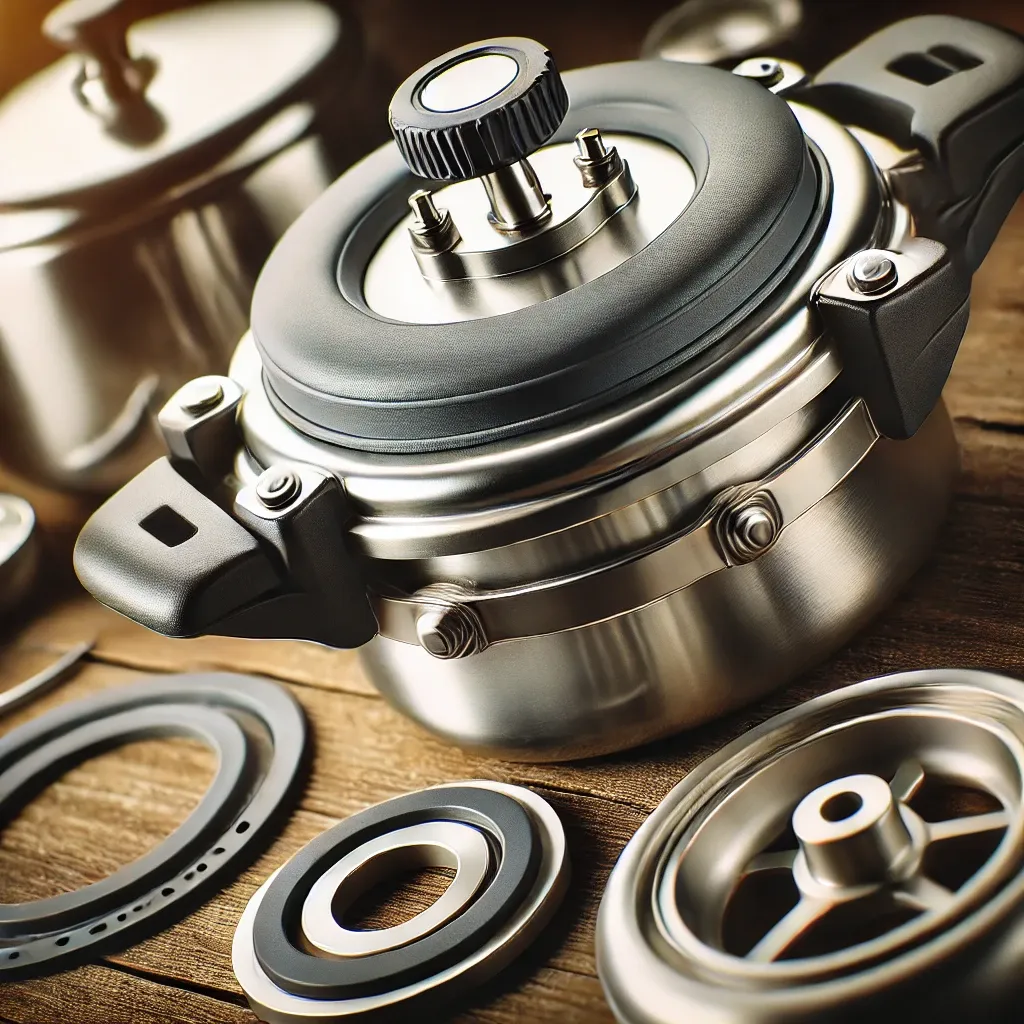Pressure cookers are invaluable kitchen tools, but their effectiveness depends on the integrity of their packing components. If your pressure cooker isn’t sealing properly or is leaking, it might be time to inspect or replace the packing. But how do you handle the packing, and what are the steps for ensuring everything fits together correctly? In this article, we’ll cover the essentials of pressure cooker packing—attachment, replacement, and compatibility.
Struggling with pressure cooker sealing issues? Learn how to properly attach, replace, and ensure the compatibility of your pressure cooker’s packing. Keep your cooking safe and efficient with these expert tips.
How to Attach Pressure Cooker Packing
Attaching pressure cooker packing may seem tricky, but with the right steps, it’s a straightforward process that ensures a tight seal for proper cooking. Here’s how to do it:
-
Check the Components Before starting, ensure you have the correct rubber gasket or sealing ring for your specific pressure cooker model.
-
Clean the Lid and Gasket Ensure the lid and packing components are clean and free of debris to avoid poor sealing.
-
Insert the Gasket Place the rubber gasket into the groove of the pressure cooker lid. Ensure it’s seated evenly and snugly.
-
Check for Compatibility Make sure that the gasket fits correctly and is the right size for your cooker. It should form a complete seal around the edge.
-
Ensure No Gaps The gasket should fit tightly without any gaps, ensuring the cooker can hold pressure without leaking.
Attaching the packing correctly is crucial for both safety and efficiency. If your pressure cooker packing is not attached securely, the cooker may not build enough pressure to cook food properly, and it can lead to dangerous situations.
Example:
A user might face trouble attaching the packing if the gasket is worn out. For example, if the sealing ring is not positioned properly, the cooker will release steam during cooking, which could delay the cooking process and cause unwanted mess. It’s important to take the time to ensure a good seal.
Pressure Cooker Packing: Signs It’s Time to Replace
Pressure cooker packing, particularly the rubber gasket, can wear out over time, especially with frequent use. Understanding when to replace your packing is vital to maintaining cooking performance. Here are some signs that indicate it’s time to replace the packing:
-
Visible Cracks or Tears If you notice any cracks or tears in the gasket, it’s a sure sign that replacement is needed.
-
Persistent Steam Leaks Even if your packing is attached correctly, steam escaping during cooking can indicate wear.
-
Decreased Pressure Build-Up If your cooker isn’t reaching pressure as it used to, the packing might be deteriorated.
-
Old Age Most pressure cooker gaskets should be replaced after a few years of use, depending on how often you cook.
-
Unusual Odor or Staining If the packing gives off a strange smell or appears discolored, it’s time for a replacement.
Example:
A user might experience poor cooking results if the packing is too old. For instance, when preparing a dish like stew, the pressure cooker may fail to maintain the necessary heat to tenderize the meat if the packing is worn out.
Replacing the packing on time will improve your cooking efficiency and ensure safety.
Pressure Pot Packing: Ensuring Compatibility and Proper Fit
Pressure pot packing comes in various shapes and sizes, and ensuring compatibility with your cooker is crucial. Here’s how to ensure that your pressure pot packing fits well:
-
Check the Cooker Model Always check the model number of your pressure cooker before purchasing replacement packing to ensure compatibility.
-
Measure the Packing Measure the diameter of the lid and the groove where the packing sits to find the right size.
-
Select the Correct Material Different cookers use different types of packing material, such as rubber, silicone, or even metal gaskets. Ensure that the material is suitable for your cooker.
-
Avoid Generic Replacements While generic packing might seem like a cost-saving option, it can compromise the safety and efficiency of your pressure cooker. Always opt for the manufacturer-recommended parts.
-
Regular Maintenance To ensure the packing remains compatible and functional, regularly clean the components, and inspect the packing for signs of wear.
Example:
When I used a non-compatible packing material on my old cooker, it led to incomplete cooking and frequent steam leakage. After switching to a compatible packing from the manufacturer, the cooker worked more efficiently and safely, preserving both food quality and energy.
Conclusion
Ensuring your pressure cooker packing is correctly attached, in good condition, and compatible with your cooker is essential for safe and efficient cooking. By following the right steps for attachment, understanding when to replace the packing, and ensuring compatibility, you can extend the life of your pressure cooker and improve cooking performance. Regular maintenance and timely replacements will ensure that your cooker continues to function properly, keeping your meals on track.
Remember, when in doubt, always refer to your cooker’s manual or consult an expert to ensure you’re using the right packing. Happy cooking!






